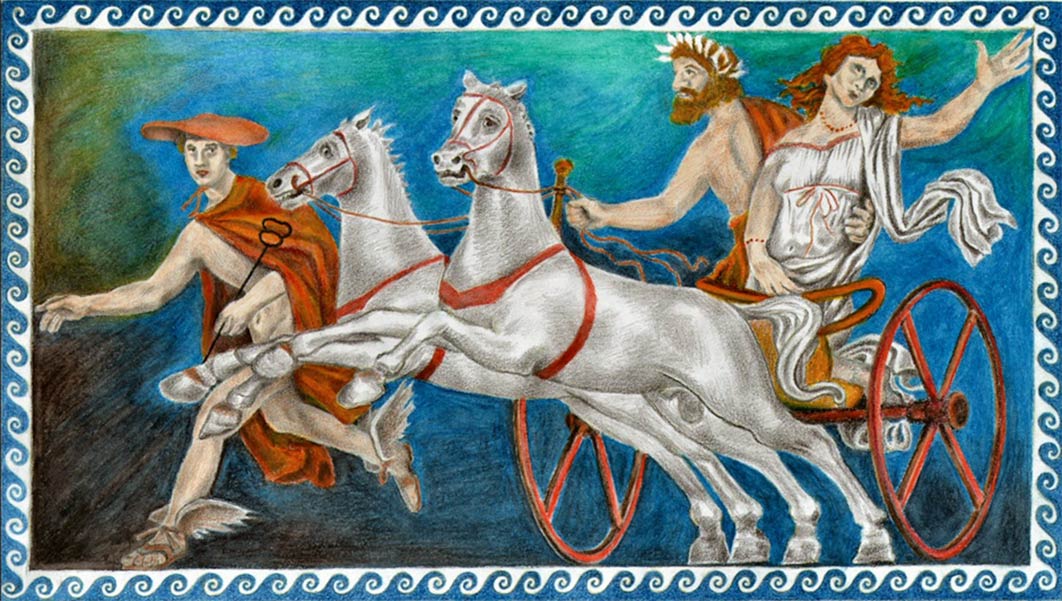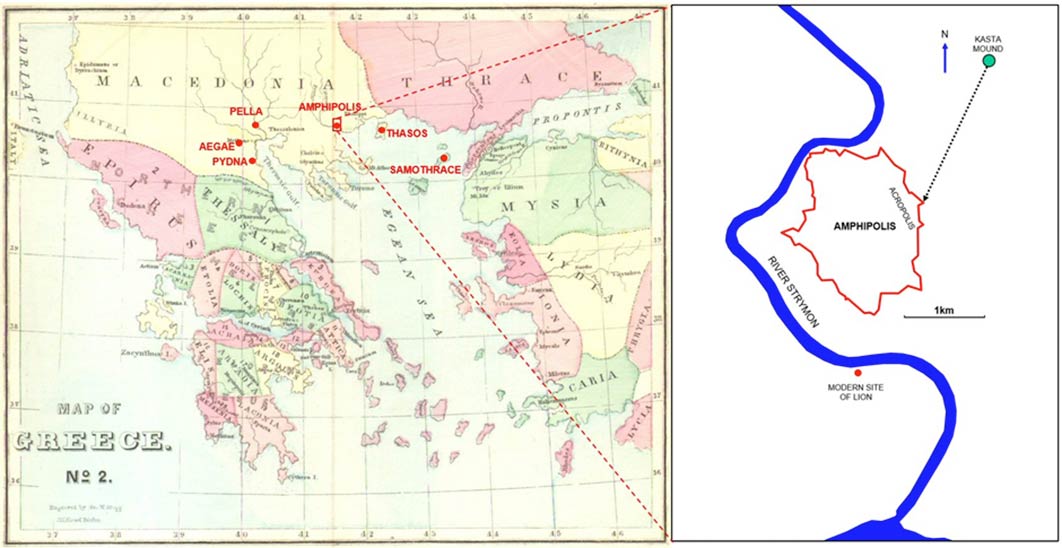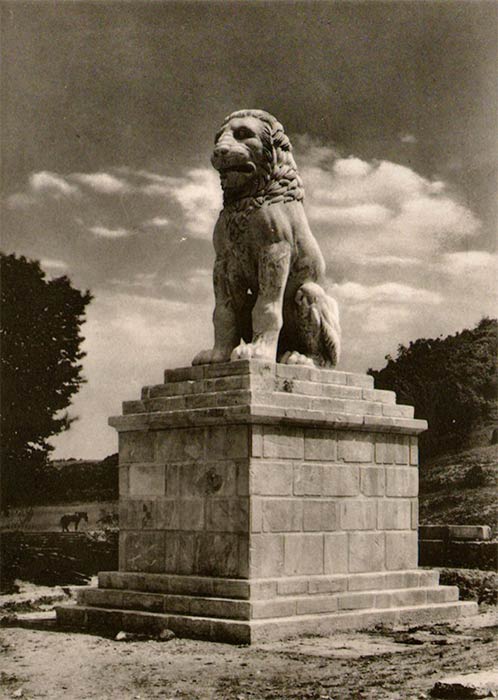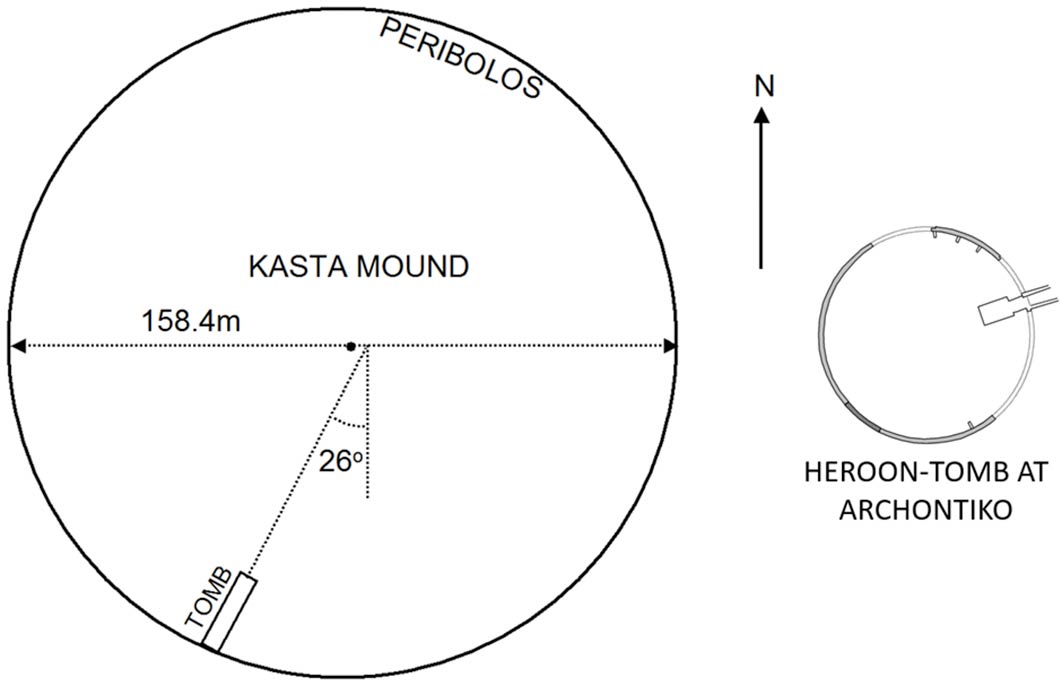
Which Mysterious Macedonian Royal Was Buried At Amphipolis?
Amphipolis is situated upon the eastern bank of the River Strymon about five kilometers (3.10 miles) inland from the northern shore of the Aegean Sea. In the time of Alexander the Great and his successors it was one of the greatest cities of ancient Greece. In particular, shortly after Alexander’s death, it became the site of the largest tomb ever built in Greece. This took the form of a circular tumulus, now named the Kasta Mound. A magnificent sculpture of a seated lion, perhaps symbolizing Alexander, once stood on a plinth at the apex of the mound gazing south-eastwards towards Asia and a succession of tomb chambers were burrowed into the south-western edge of the mound in an alignment that pointed precisely towards the acropolis of the nearby city.

Location of Amphipolis and other relevant sites in northern Greece and the site of the Kasta Mound with the orientation of the tomb chambers towards the acropolis of the city (Image: ©A. M. Chugg using a map of Greece published in 1872).
Amphipolis Excavations
A sequence of excavations has uncovered a perimeter wall, known as the peribolos, that exceeds half a kilometer in length and is constructed of the finest marble. The presence of a cist grave beneath the floor of the last chamber and the exhumation of human remains within its anciently disturbed trench attest clearly to the status of the mound as the monument for a burial. The vastness of this monument and the superlative quality of its decoration compels one to believe that the occupant of the grave was a personage of the very highest importance. Multiple strands of evidence firmly date the burial to the last quarter of the fourth century BC in the immediate aftermath of the death of Alexander himself in 323 BC.
A tomb for Alexander would not have been constructed at Amphipolis, but rather in the traditional royal cemetery in the ancient capital of the Macedonian kings at Aegae. So, which mysterious Macedonian amongst those that perished at that time could possibly have merited a monument worthy of Alexander himself and why at Amphipolis rather than the traditional capital of the kingdom?

The lion from the summit of the Amphipolis Tomb restored and resurrected just south of Amphipolis in the 1930s (Image: Provided by the author - courtesy Jacques Roger, late 1930s).
Dating the Monument
The lion was found in 1916 in pieces near a Roman causeway or dam across the Strymon just south of Amphipolis. It was accompanied by many marble blocks demonstrably derived from the peribolos of the Amphipolis Tomb and in the recent excavations at the mound at least one missing piece of the lion is stated to have been found. It has been dated to the last quarter of the fourth century BC, noting that a series of similar Greek lions had been erected under Alexander and his immediate successors starting with the lion monument at the site of the battle of Chaeronea and continuing with the lion sculpture found at Ecbatana [Hamadan], the lion in Venice that was taken from Piraeus near Athens and the lion monument of Knidos.
There is a smaller scale and later imitation of the circular form of the Amphipolis Tomb at Archontiko near Pella, which has been dated using potsherds to the second quarter of the third century BC during the reign of Antigonos Gonatus.





